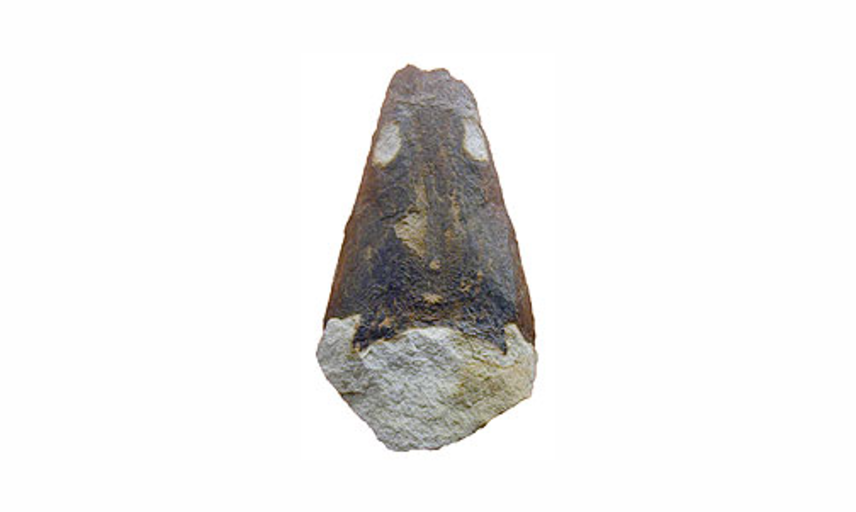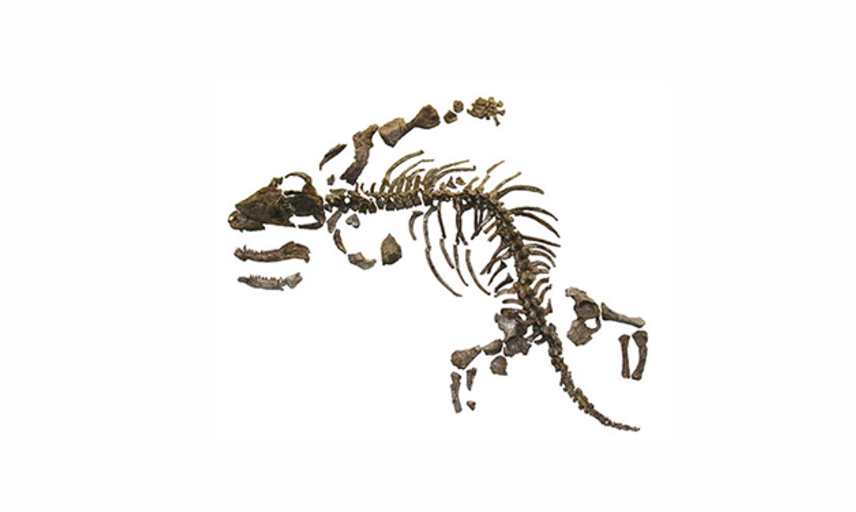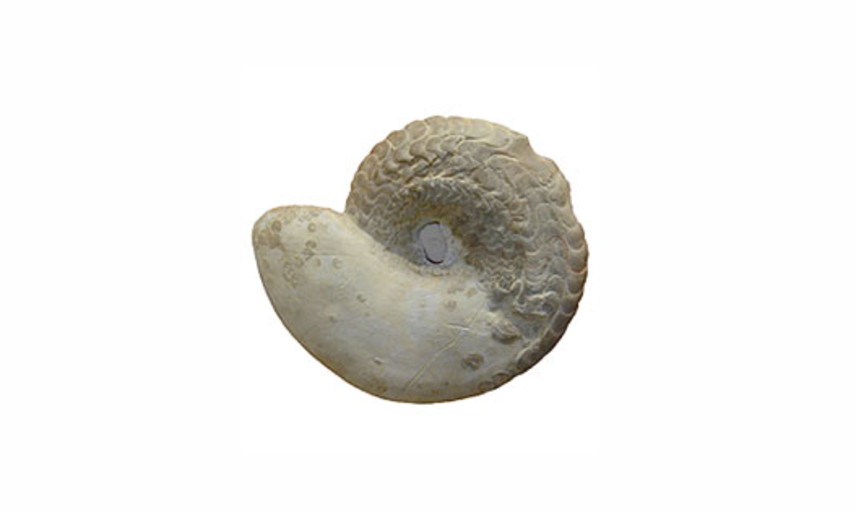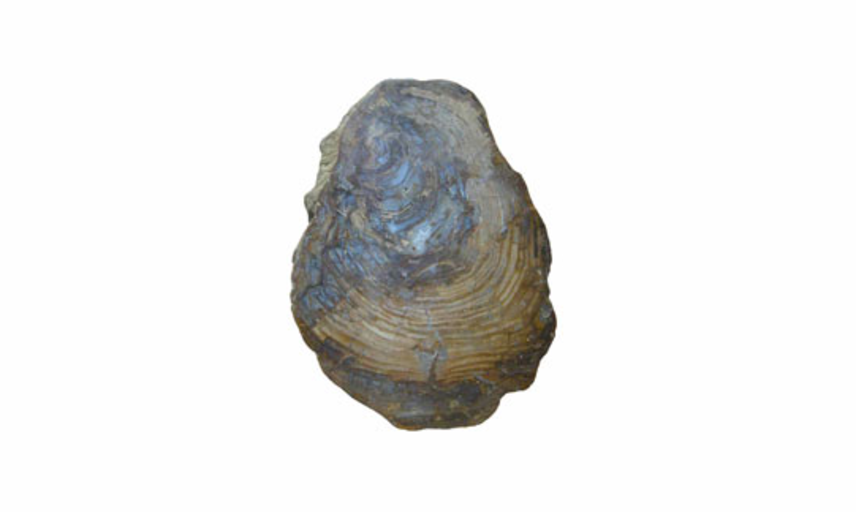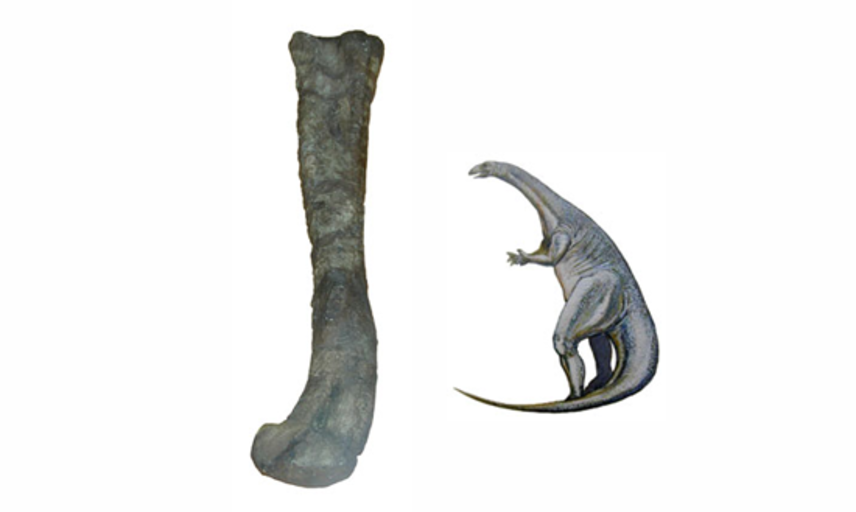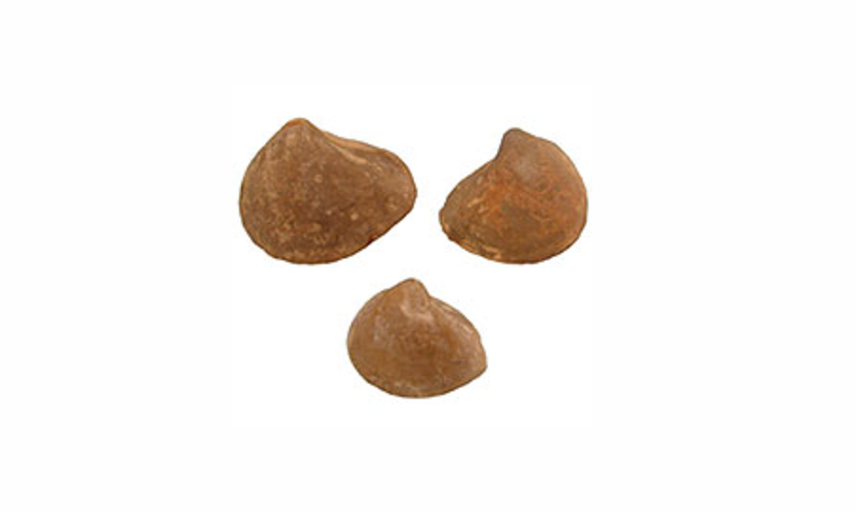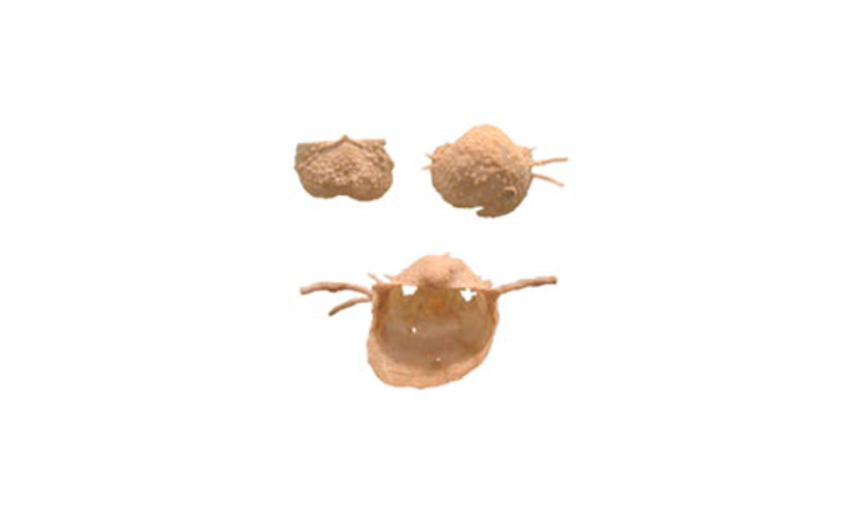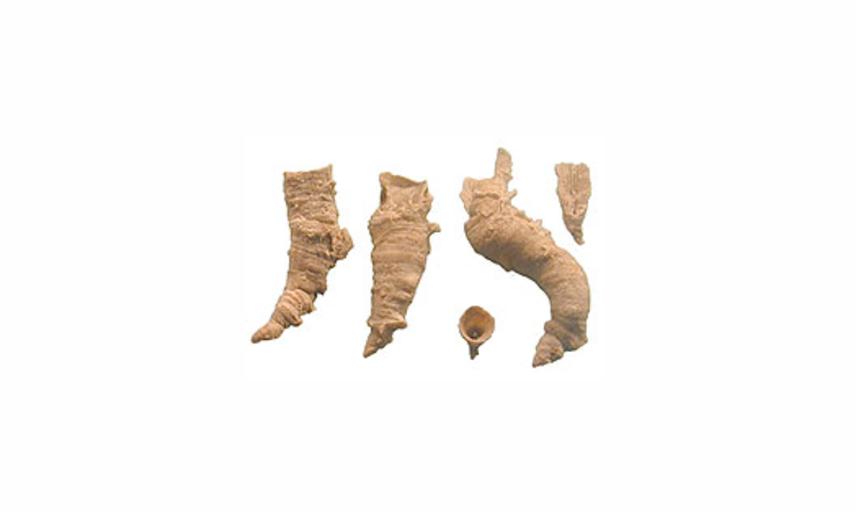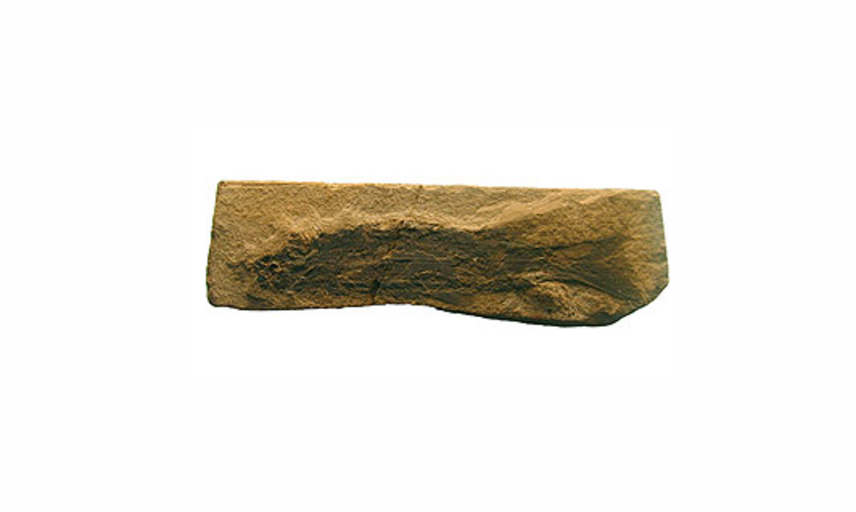The Triassic and Permian
The Triassic
When: 250 to 205 million years ago.
Animals: Reptiles dominate the land, molluscs dominate the sea (brachiopods and echinoderms are now rarer).
Plants: Ferns and conifers (like pine trees) grow on land.
Firsts: The Triassic sees the first dinosaurs, pterosaurs and mammals.
Lasts: Most groups lived through the Triassic, to the Jurassic.
Notes: Britain was an arid (dry) and warm area during the Triassic, so we don't see many British Triassic fossils.
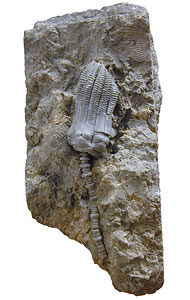
This is a fossil crinoid or sea lily. Sea lilies are echinoderms - they are related to starfish and sea urchins.
This fossil was found in Germany where it lived just over 380 million years ago.
The Permian
When: 292 to 250 million years ago.
Animals: Reptiles rise to dominate the land, but amphibians are important in wetter environments. Giant trilobites, brachiopods and corals are common in the sea.
Plants: Conifers (pine trees) become important. A plant called Glossopteris is very common in Antarctica, Australia, South Africa and South America.
Lasts: Trilobites and eurypterids die out. Many groups of molluscs, crinoids and brachiopods also become extinct.
Notes: The Permian ends in a mass extinction. An estimated 96% of marine animals with hard parts die out.
Do you know what these fossils are?
About this resource
Science topic: Fossils, Rocks, Evolution
Key Stage: KS2
Type: Information, Activity
Keywords: Triassic, Permian, Triassic plants, Triassic reptiles, Permian mass extinction

